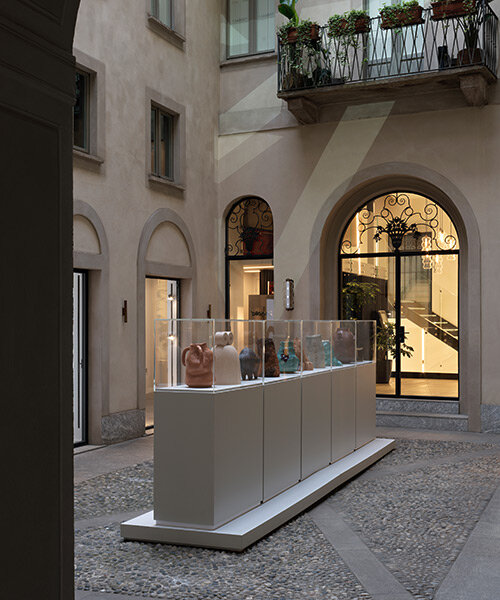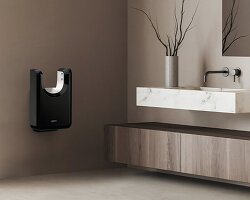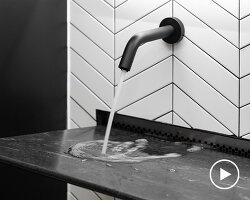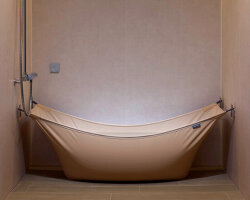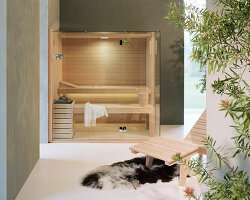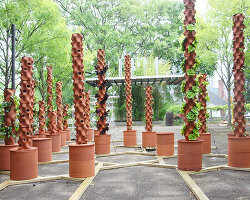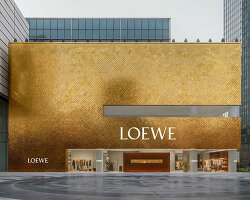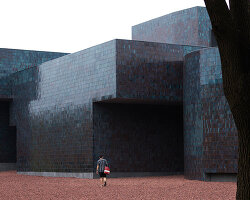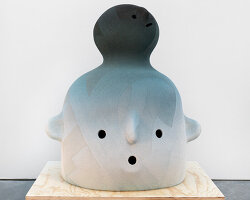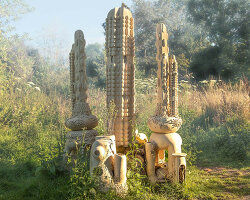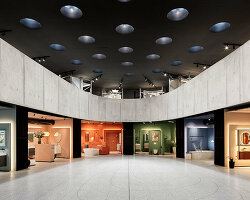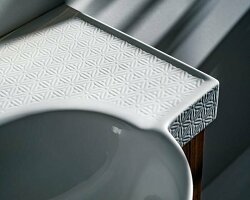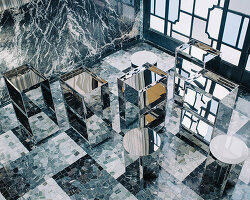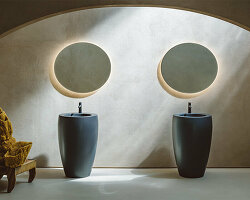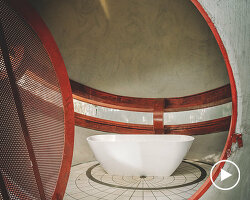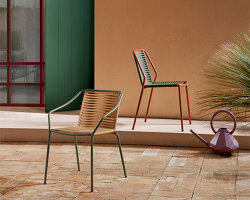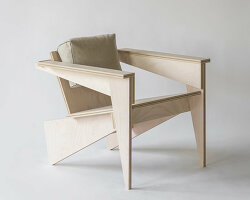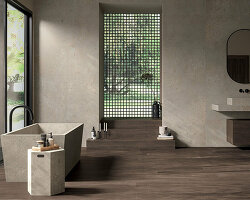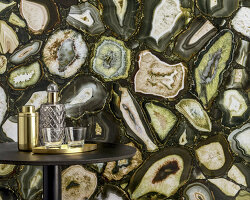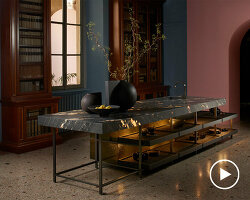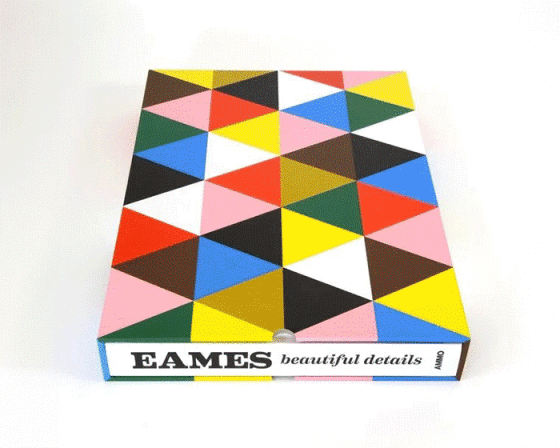designboom speaks to roberto sironi on his ‘color archaeology’
Swiss bathroom company LAUFEN takes the ceramics world by storm with the unveiling of their new 12-color palette. Developed in collaboration with Studio Roberto Sironi, the collection marks the beginning of an interdisciplinary journey through art, design, archaeology, and the history of color. On the occasion of the Milan Design Week 2024, designboom interviews Roberto Sironi on his vision and curation of the Color Archaeology exhibition hosted at LAUFEN space, traversing ancient ceramic cultures in a time span from 3000 B.C. to 1500 A.D.
‘Similar to an alchemical process – and ceramics is first and foremost alchemy – the disciplines of art, design, archaeology and the history of color, interact with each other. In my view, if you approach ceramics as you do other historicized materials, you cannot ignore the study of that medium throughout history. Ceramics has always been an expression of identity, art, anthropology, and this was the starting point of the project,’ begins Roberto Sironi, designer and curator of Color Archaeology.
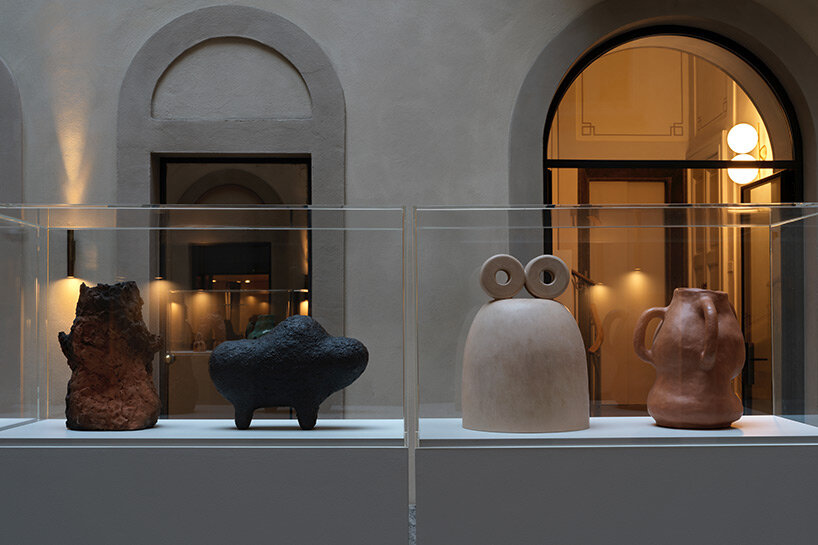
Swiss bathroom company LAUFEN reveals its new 12-color palette developed by Roberto Sironi
all images courtesy of LAUFEN
Commissioned by LAUFEN and undertaken by Studio Roberto Sironi, the color research expresses the Swiss bathroom company‘s vocation in the search for new expressive languages and multidisciplinary contaminations, materializing as a result a palette composed of twelve colors. With its experimental approach, LAUFEN entrusted Roberto Sironi with its first-ever research on color, which required three years of development and resulted in a collection of twelve colours designed to maintain its value and expressive power over time: a tool for both the present and the future. Materializing as a result, a palette composed of twelve colors, the most refined and sought-after shades of the ancient world are reworked to create contemporary and timeless nuances, referencing Le Corbusier’s legendary Polychromie Architecturale. Curated by Roberto Sironi himself, the exhibition, titled Color Archaeology, is taking place at the LAUFEN space in Milan, with installations crafted by Matteo Fiorini from Studio Lys, and the artistic vision of Beda Achermann (Studio Achermann).
‘Color palettes often have the limitation of having a temporal expiration as they are linked to trends. Wanting to break away from this pattern, I have endeavored to set up the project through deep research, developing timeless hues already present within history. With LAUFEN, we spent more than a year in the industrial translation of the originally identified colors, searching for perfect colors and refined tactility. This should ensure that these colors, used by various civilizations for millennia, remain captivating and evoke emotion for people of the present and future,’ continues Roberto Sironi.
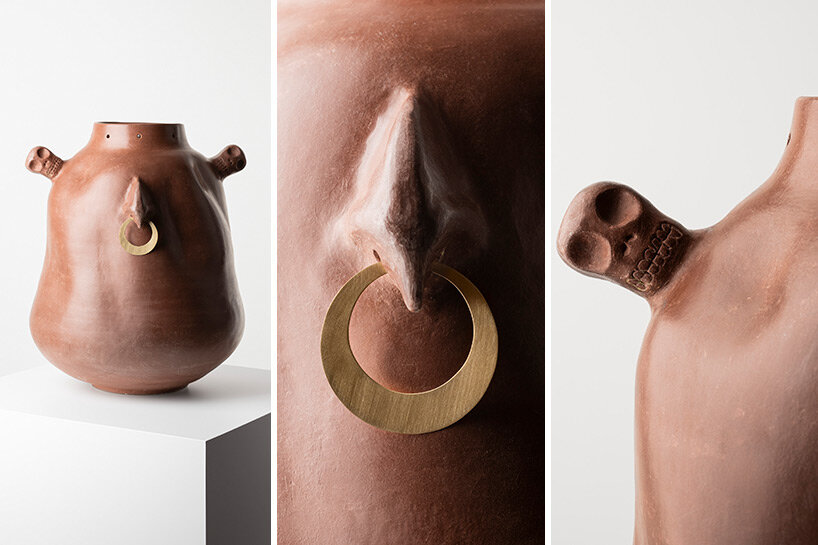
Roberto Sironi’s Anthromorphic artistic ceramics, created with Luca Mandaglio, played a crucial role in his research for LAUFEN | image © Federico Villa
a palette that spans from ancient egypt to imperial china
Each of the 12 colors that make up Color Archaeology is inspired by artefacts from antiquity, the cultural, religious and social archetypes of civilizations in different eras, with the strength to retain its value and expressive power well into the future. Traversing time from 3000 B.C. to 1500 A.D., the project unfolds through the study and chromatic classification of thousands of ceramic works from the databases of the most important international archaeological museums. The spectrum of colors from the serene blues of Ancient Egypt to the fiery brick red orange of Roman sealed earth, the Nazca and Moche ochres of pre-Columbian productions, the Chinese imperial celadons, the shady greens of the Japanese Kamakura period, the soft pinks of African Nok earthenware, the sandy tones of Mesopotamian productions, the ceruleans of ancient Egypt, and the night blues of medieval Islamic ceramics, in a compendium of colors that reinterpret archaeological ceramics through chromatic classification.
‘I extensively researched the history of ancient ceramics to identify clusters that enabled me to isolate a range of colors. For example, when we talk about Egyptian Blue, we are referring to a recognizable tone of blue that has been acknowledged throughout history. This type of blue, developed by the Egyptians through technological innovation, has survived history not only for its chromatic definition but also for its socio-cultural significance,’ says Roberto Sironi.
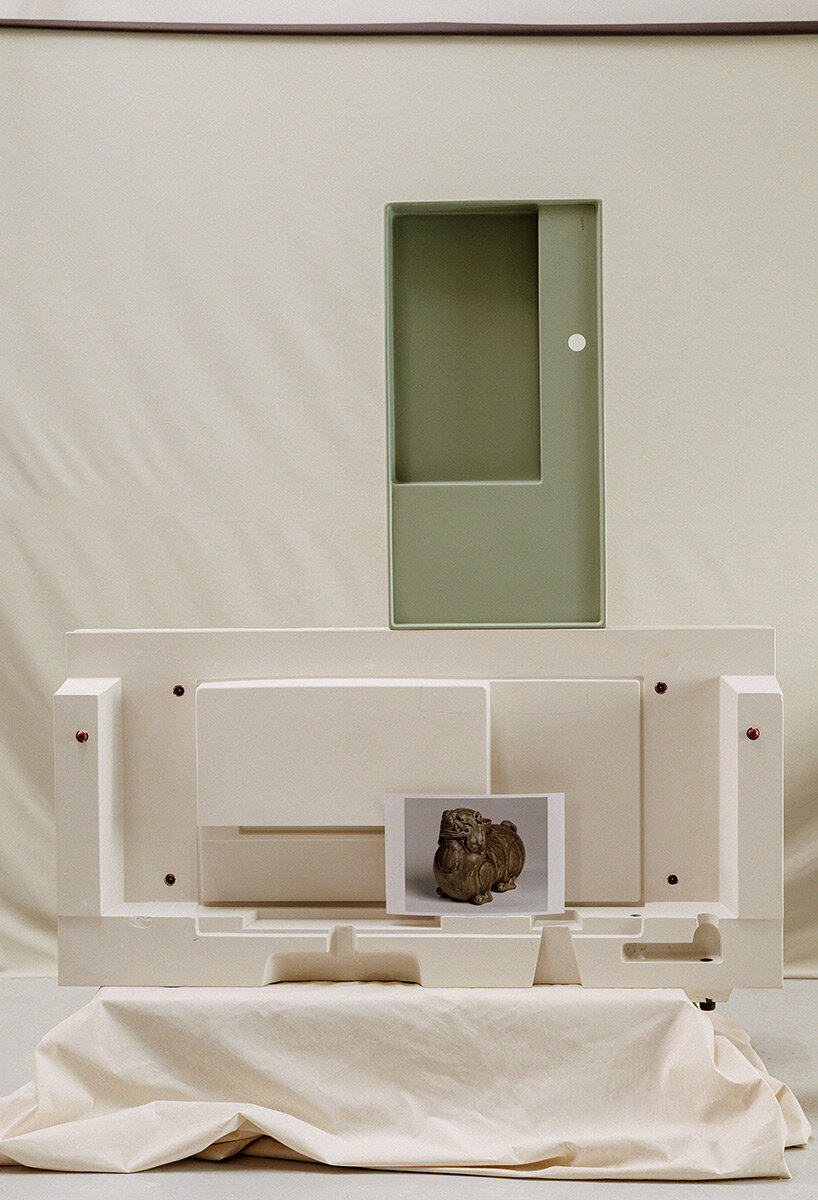
each of the 12 colors that make up Color Archaeology is inspired by artefacts from antiquity, the cultural, religious and social archetypes of civilizations in different eras (Jade Green)
the history of color traverses ancient ceramic cultures
The 12-color palette evokes temporal fragments and specific geographies, alchemical discoveries, and refined aesthetics, designed to be applied to today’s ceramic contemporaneity and to enter domestic spaces. To narrate the essence of the research, the installation is divided into three parts, starting in the courtyard. Here, it is possible to admire the 10 ceramic pieces created by Roberto Sironi in collaboration with ceramist Luca Mandaglio. Using diverse techniques and materials, each piece evokes and references a historical production. Embedded within these sculptures are echoes of archaeological excavations, where objects are revitalized with colors that have their roots in millennia-long history of ceramics. Each single hue represents a result of a complex alchemical process, reflecting the available raw materials and serving as a testament to the technological advancements achieved over time.
‘The installation, designed by Studio Lys with the graphic project by Studio Achermann, develops through a light enveloping structure which acts as a narrative support to visually narrate the research, while in the courtyard there is an installation which presents a series of artistic ceramics – which I created together with the ceramist and researcher Luca Mandaglio – as research on color and matter in ancient ceramics,’ he continues.
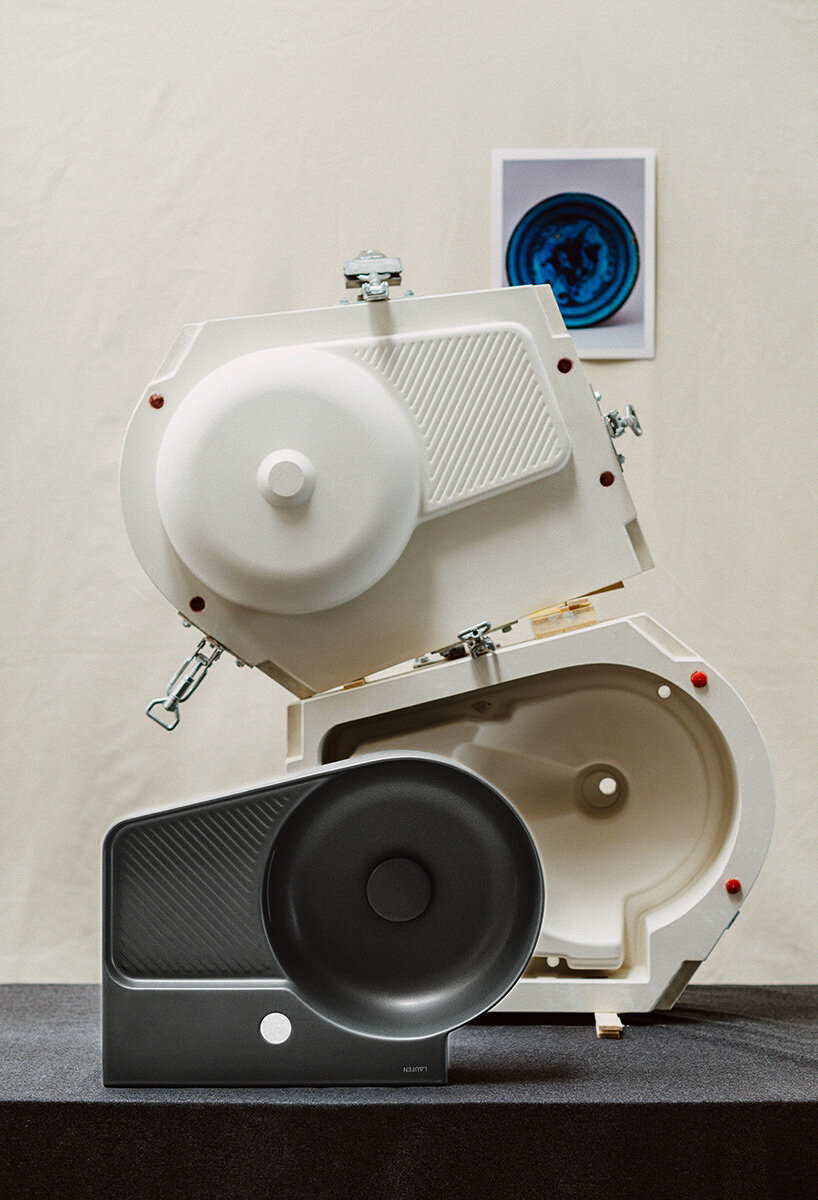
the spectrum of colors from the serene blues of Ancient Egypt to the fiery brick red orange of Roman sealed earth (Kashan Blue)
As the exhibition continues, visitors are transported into the second floor with the artistic visuals created by Beda Achermann and his studio. The internationally renowned art director has been working with LAUFEN for several years, capturing the brand’s eclectic character and spirit and applying his approach to the brand, which blends tradition and modernity through an ultra-contemporary language that combines art, photography, architecture and design. The third part of the exhibition showcases a series where a series of compositions, made with LAUFEN’s iconic Saphirkeramik pieces, come alive with the hues of the new palette. All the products here have been produced at LAUFEN’s highly innovative production facility in Austria and fired in the world’s first electric tunnel kiln powered by renewable energy, while the new shades are combines with faucets, furniture and accessories to create evocative and sophisticated environments. The Color Archaeology exhibition project realized by Matteo Fiorini – Studio Lys is conceived as a travelling installation and after the Milan Design Week will be hosted in other LAUFEN spaces, in Vienna, Berlin, Madrid and Prague.
‘My goal was to reinterpret a series of colors developed artistically and craftily throughout history into colors applicable to industrial ceramics. We have worked hard to achieve this goal and the results make me proud.
I believe that when a project is research-based, it creates something with the power to be both seminal and generative. The concept is that these colors can also serve as the pivotal point for professionals or individuals in designing the color palette and materials within the bathroom environment,’ concludes Sironi.
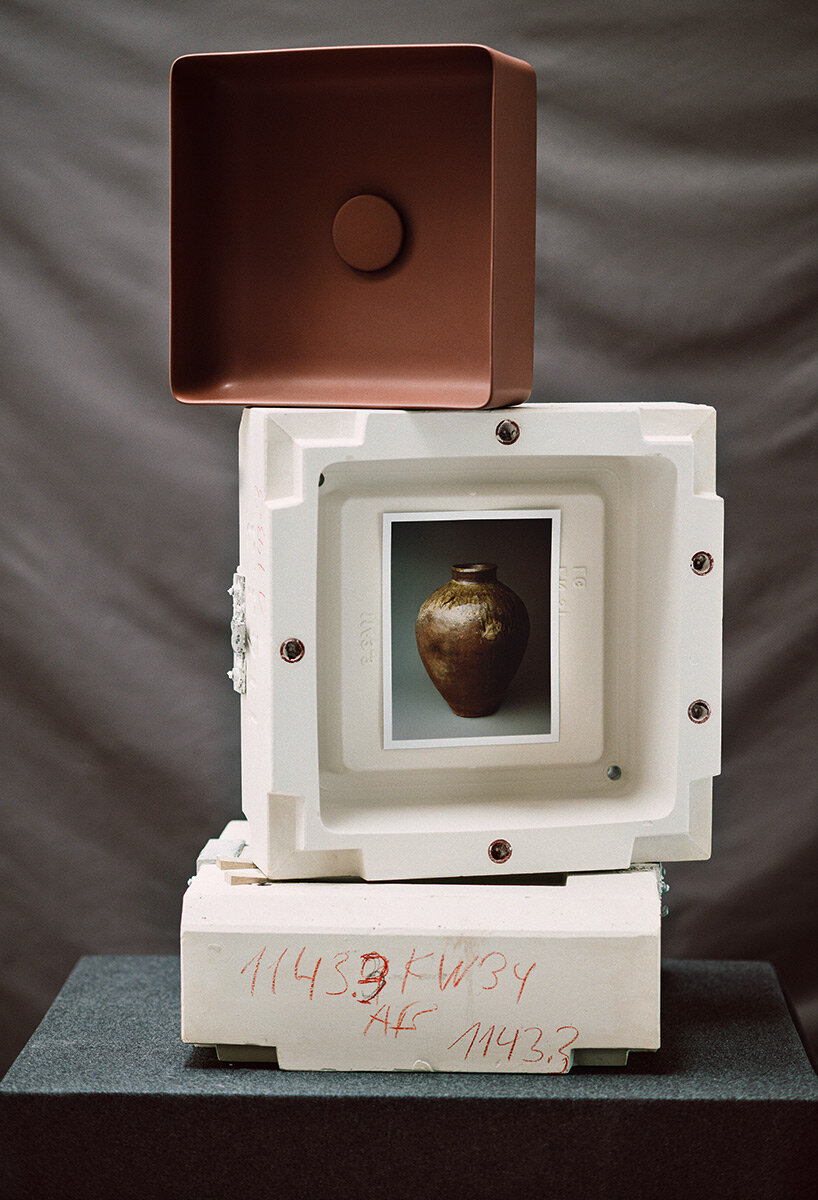
commissioned by LAUFEN and undertaken by Studio Roberto Sironi, the color research expresses the Swiss bathroom company’s vocation in the search for new expressive languages and multidisciplinary contaminations (Red Ochre)
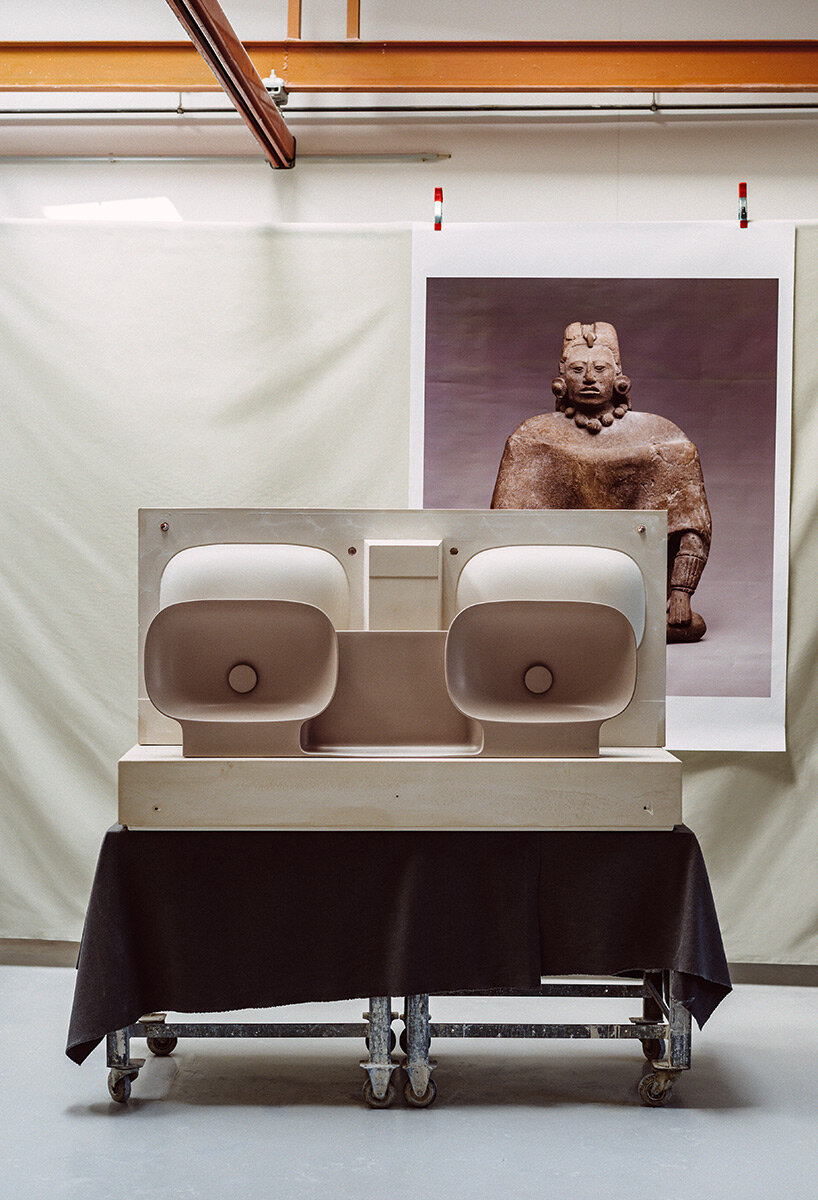
traversing time from 3000 B.C. to 1500 A.D., the project unfolds through the study and chromatic classification of thousands of ceramic works from the databases of the most important international archaeological museums (Ancient Mud)
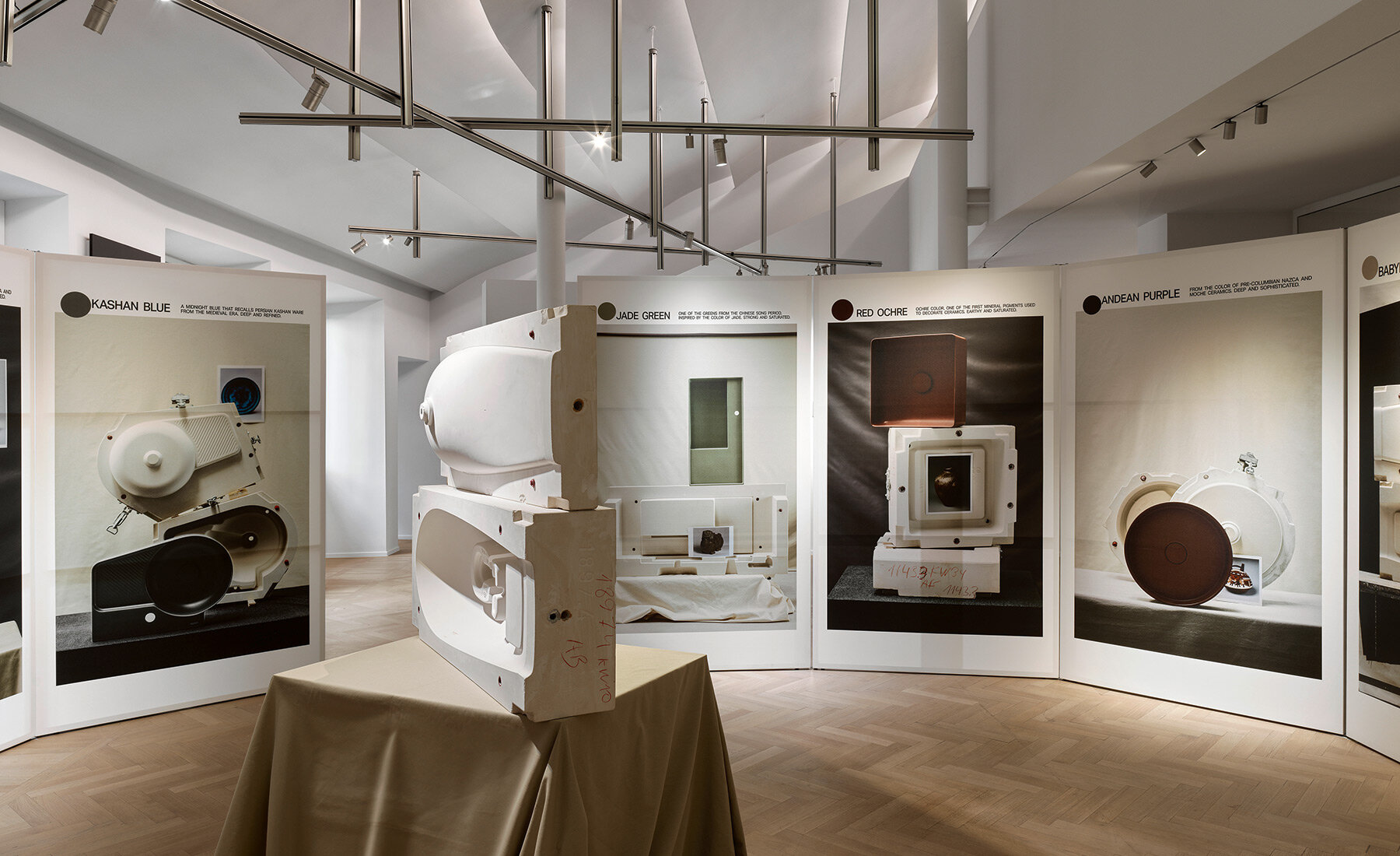
each single hue represents a result of a complex alchemical process, reflecting the available raw materials and serving as a testament to the technological advancements achieved over time
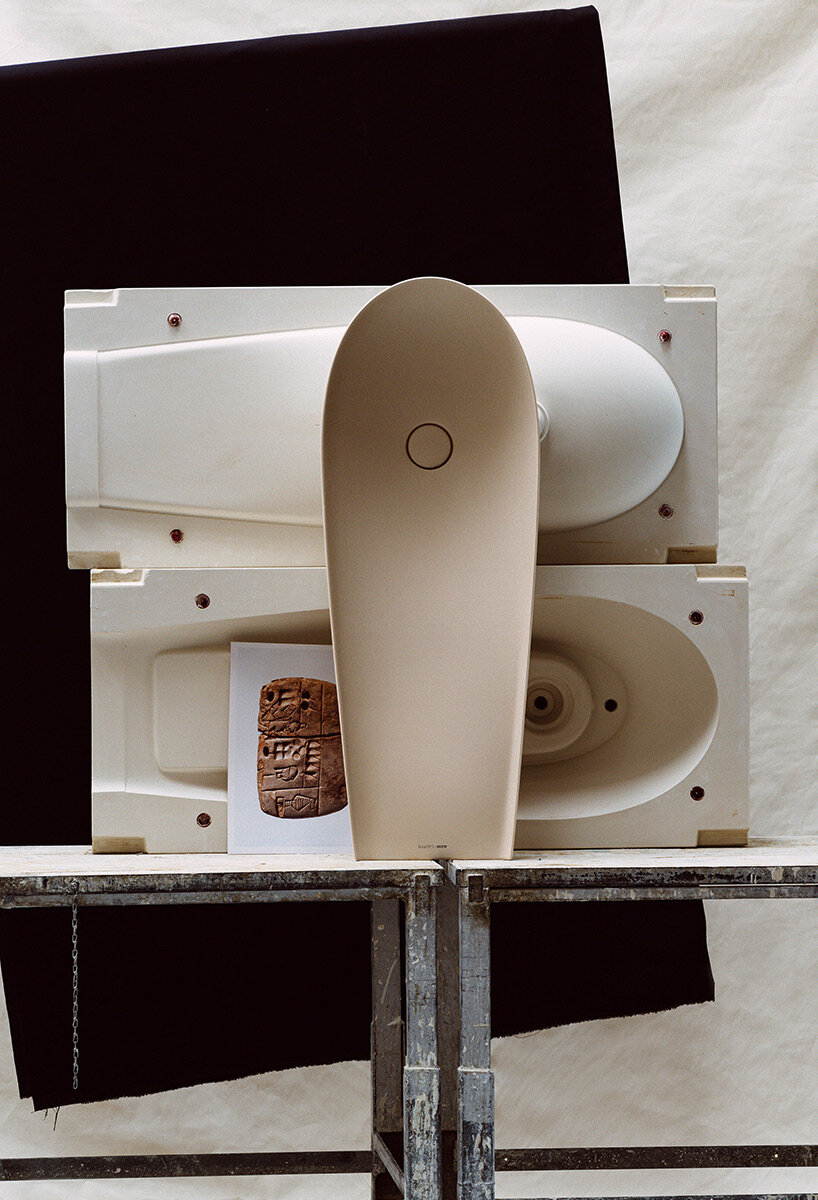
LAUFEN entrusted Roberto Sironi with its first-ever research on color, which required three years of development (Babylonian Sand)
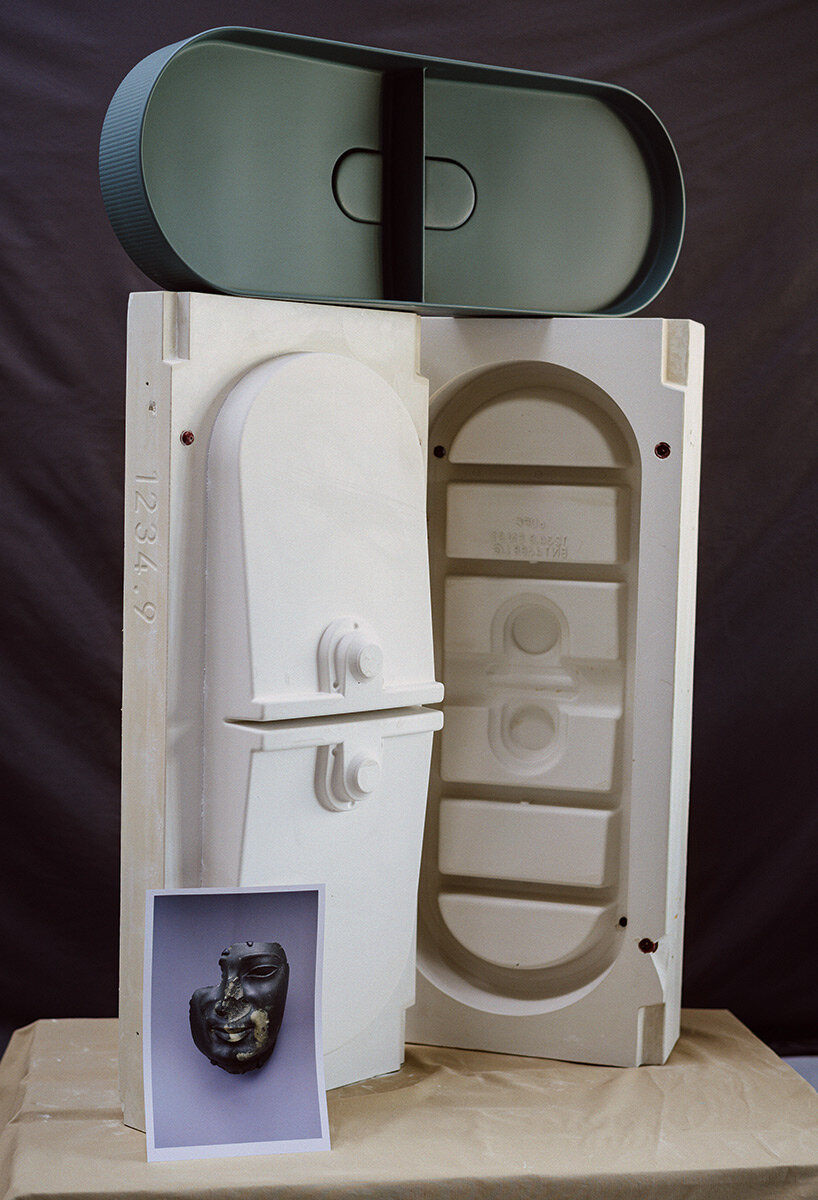
Egyptian Ceruleanjpg
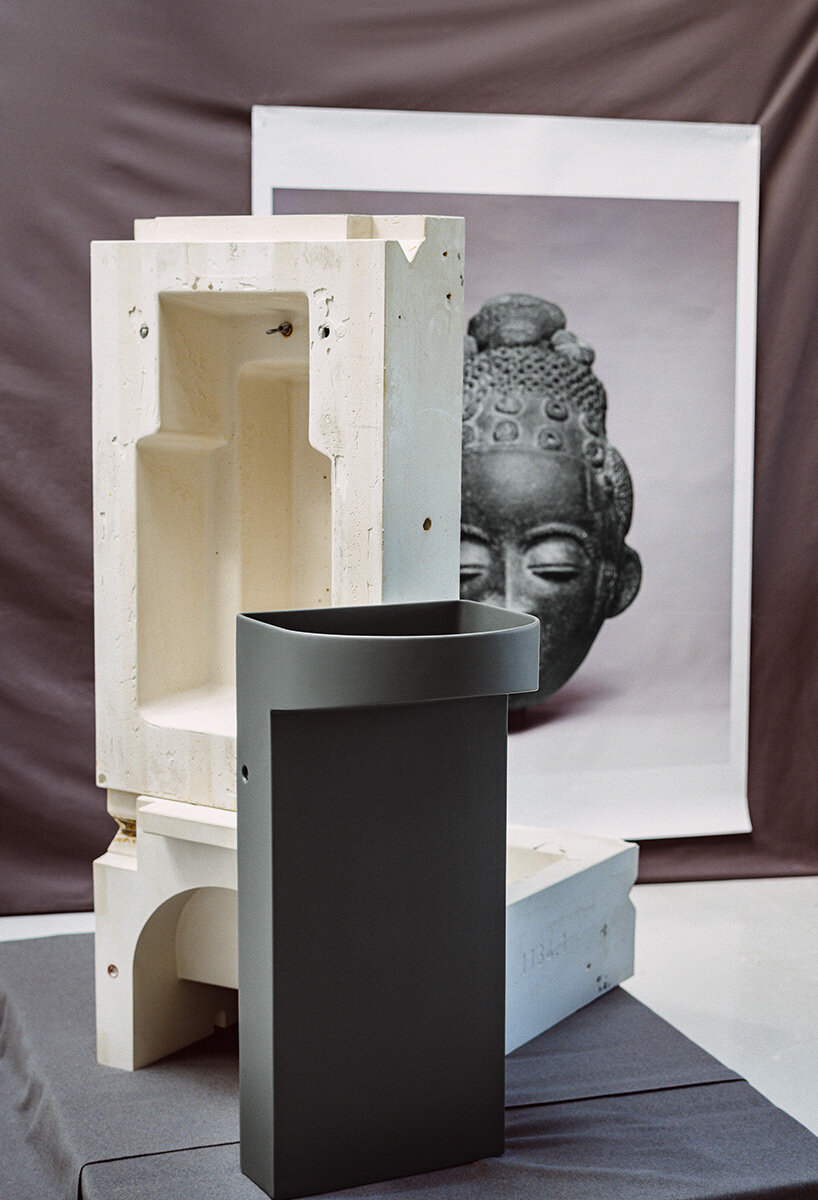
Umber Green
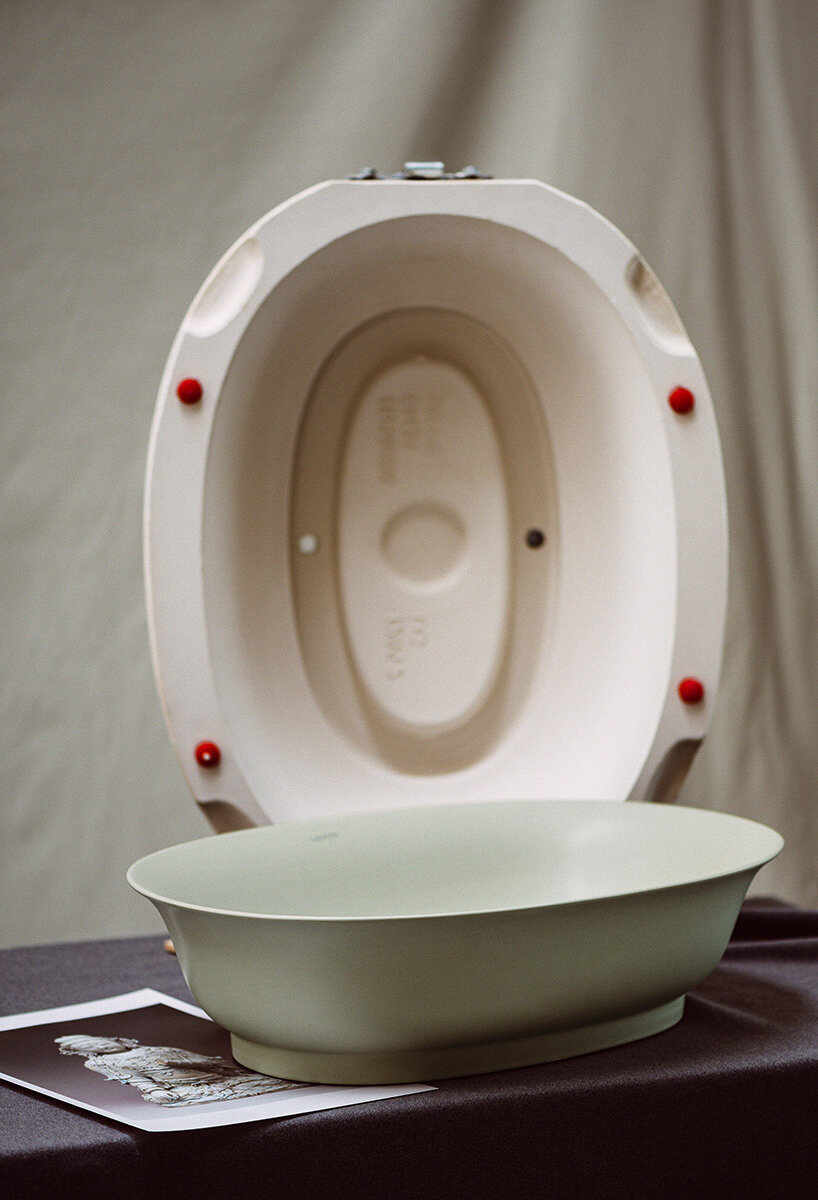
Celadon Green
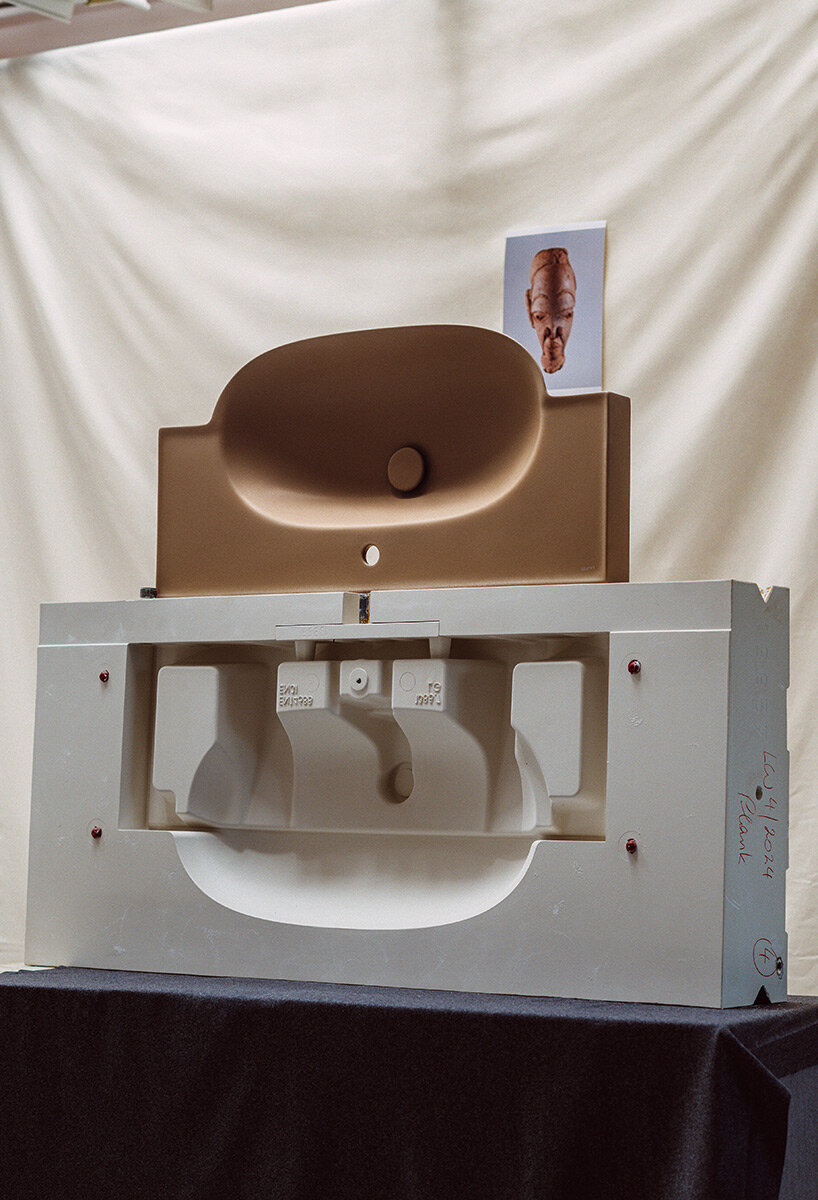
Reddish Patina
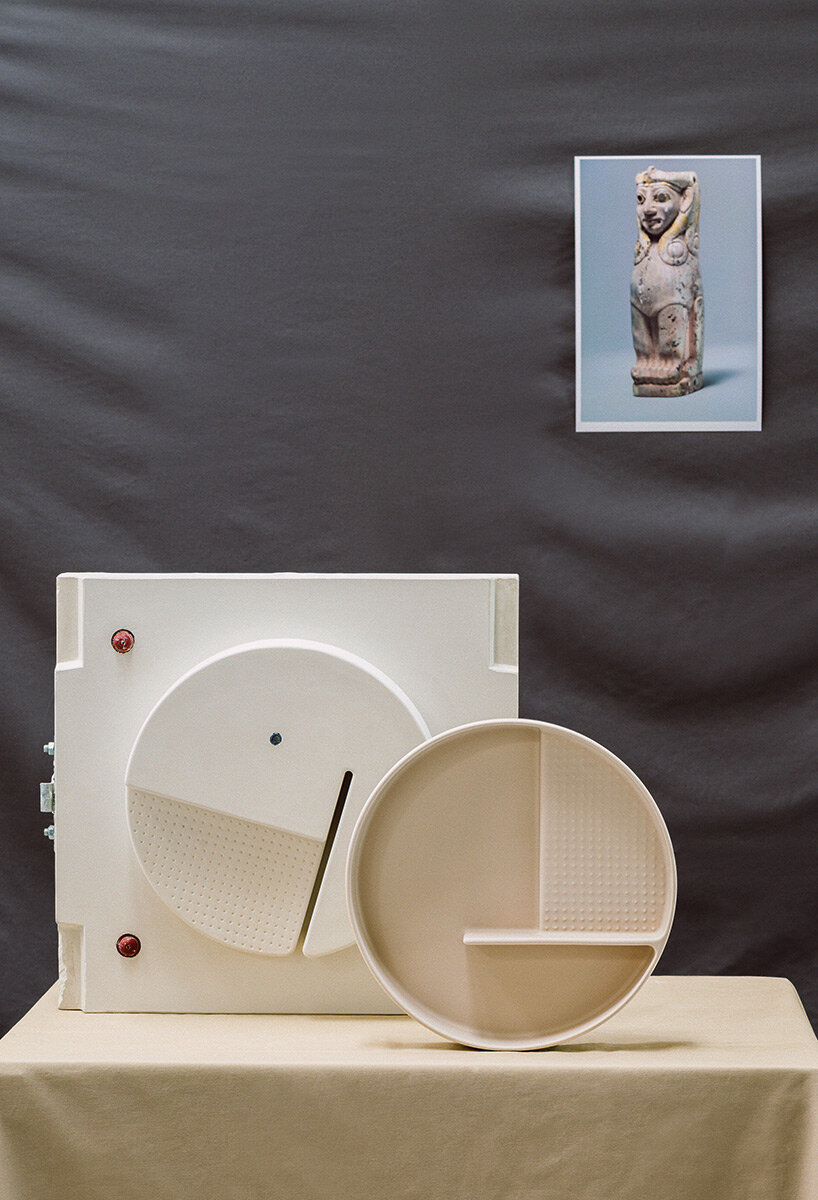
Dusty Pink
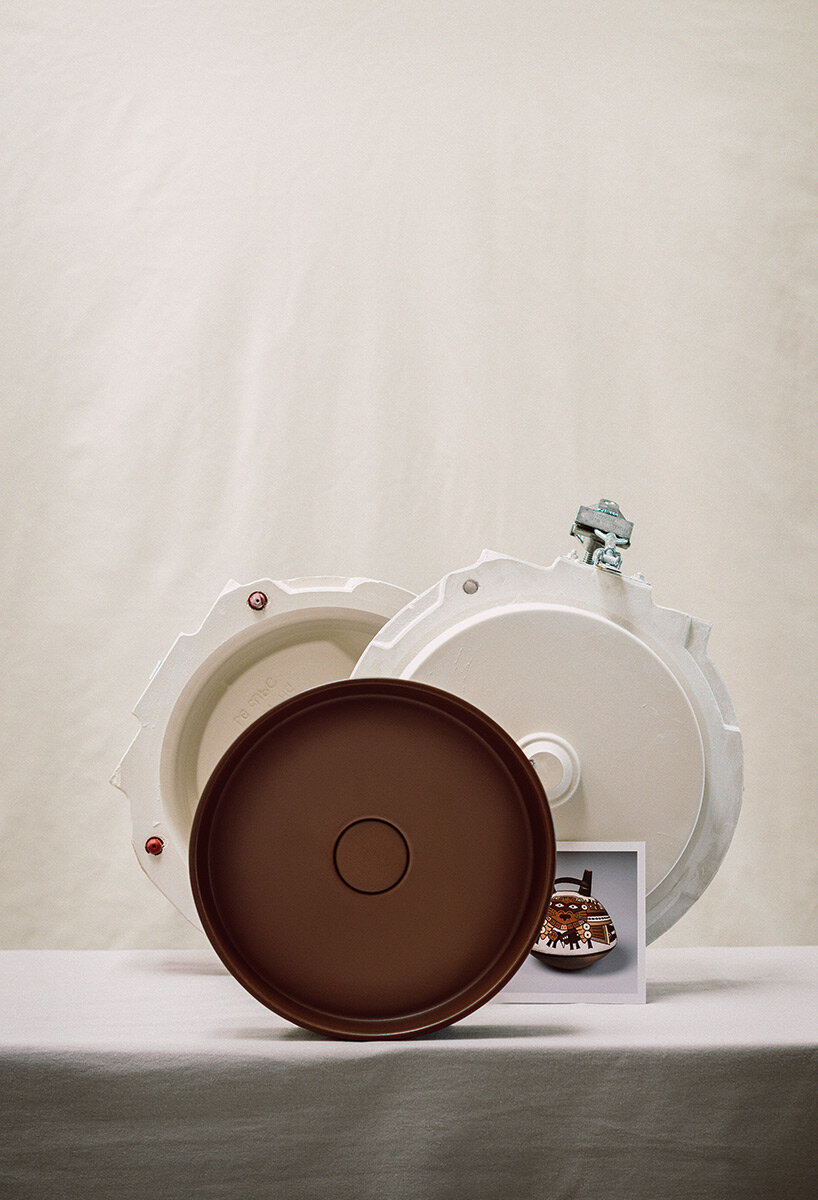
Andean Purple
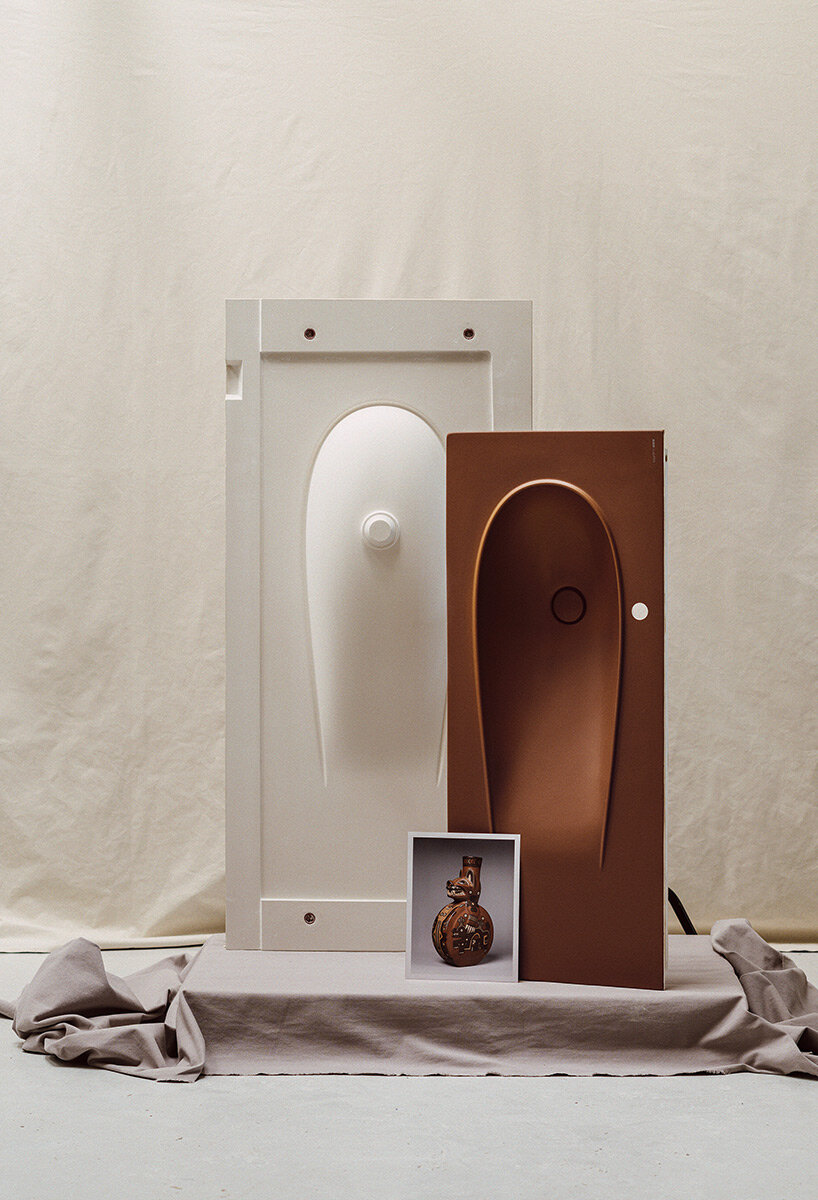
Burnt Orange
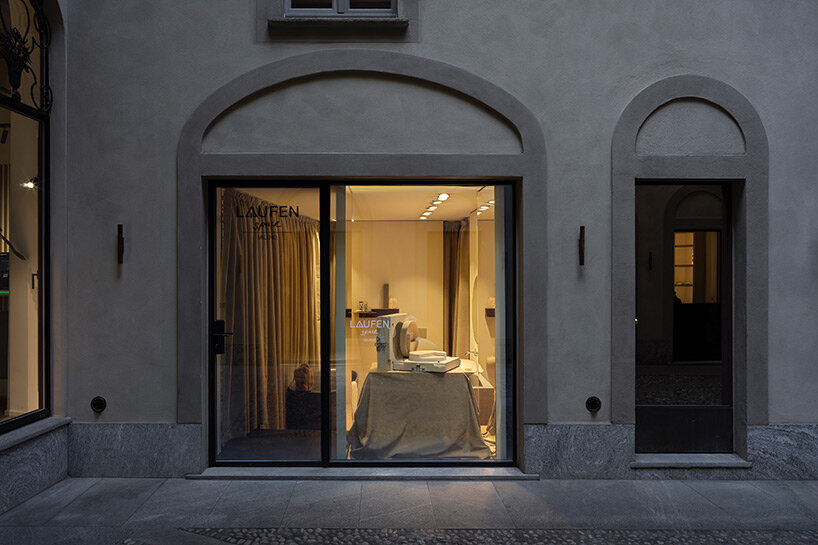
curated by Roberto Sironi, Color Archaeology takes place at the LAUFEN space in Milan, with installations crafted by Matteo Fiorini from Studio Lys, and the artistic vision of Beda Achermann (Studio Achermann)
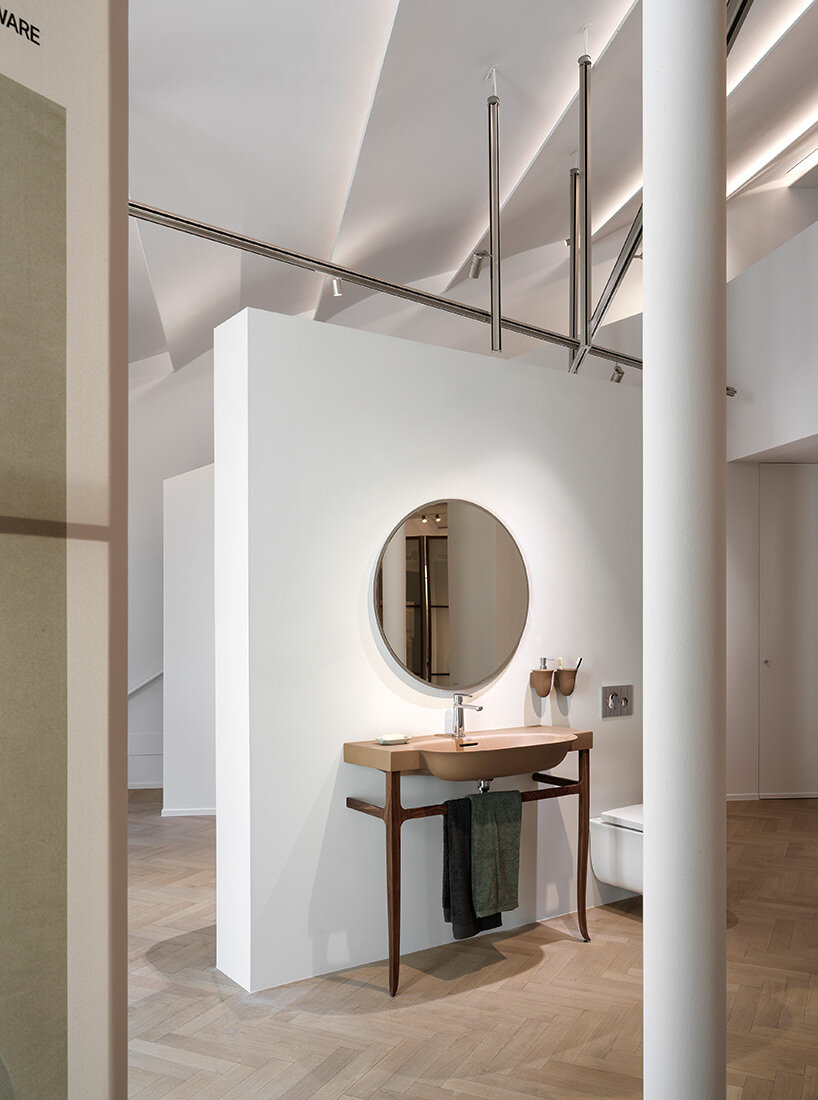
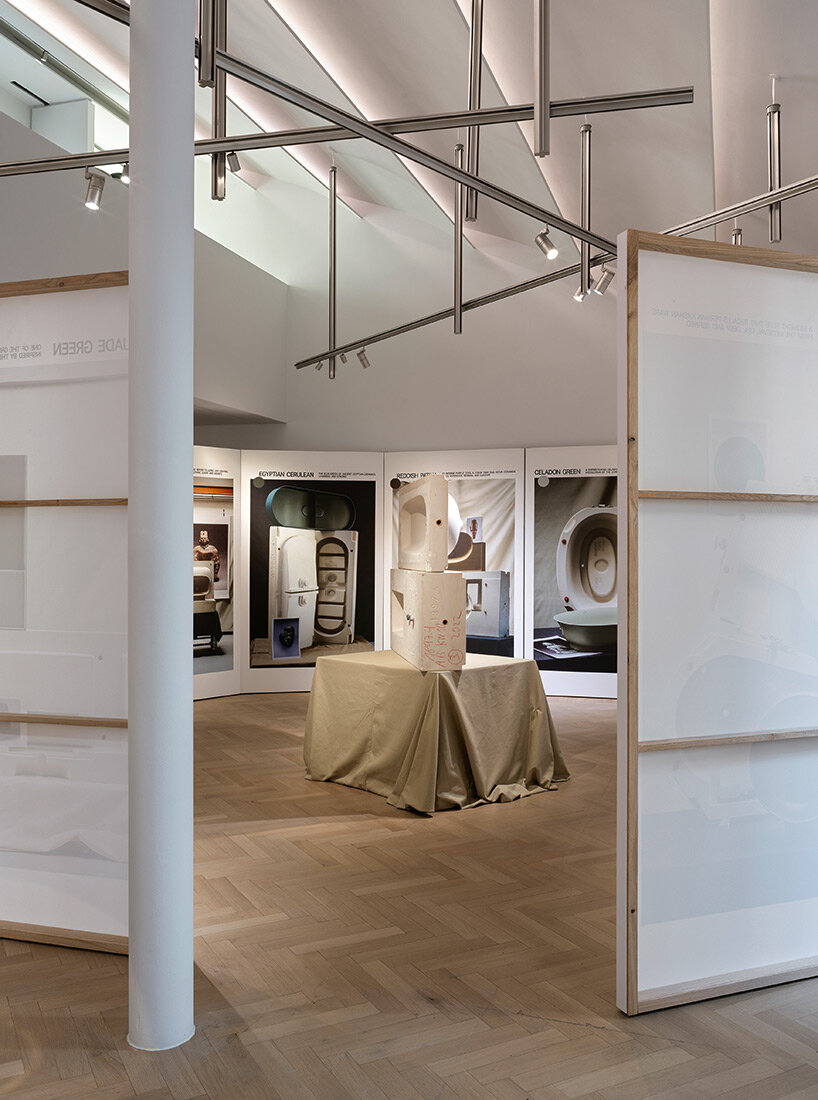
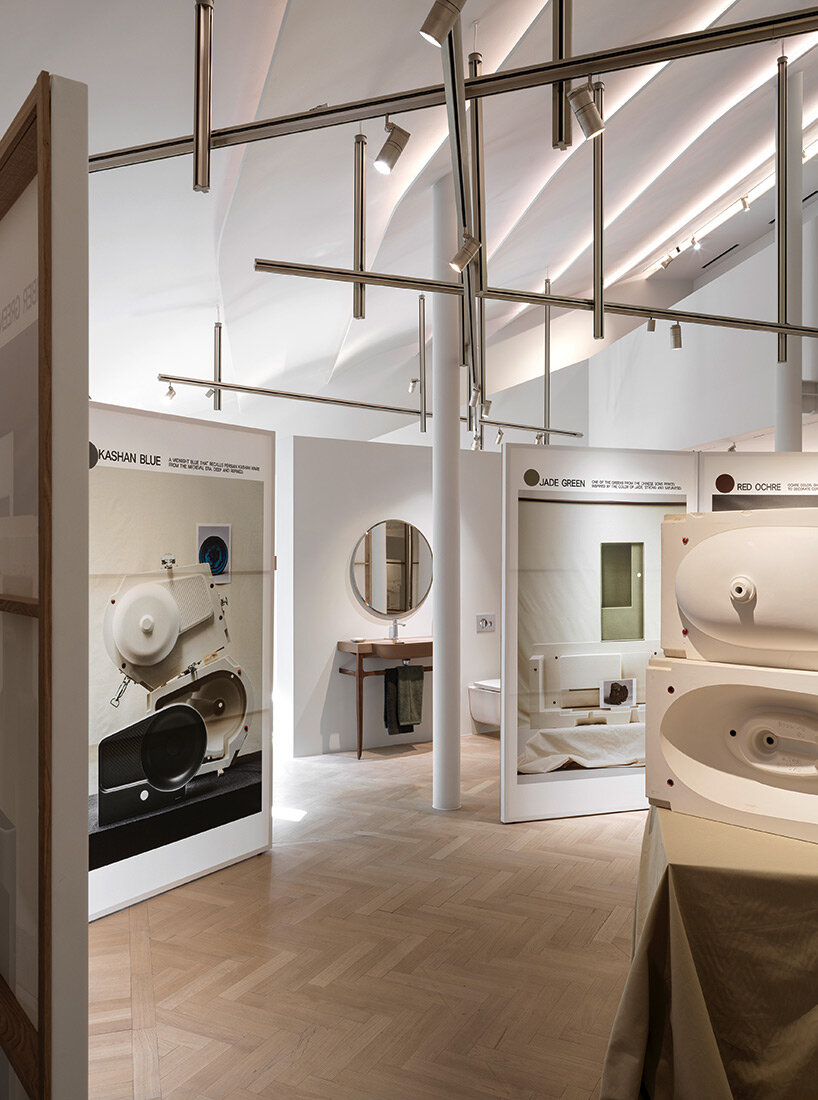
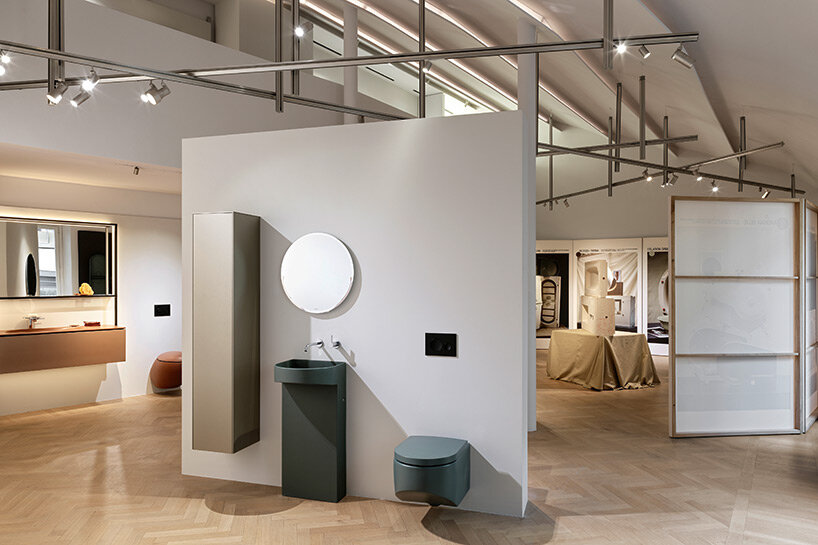
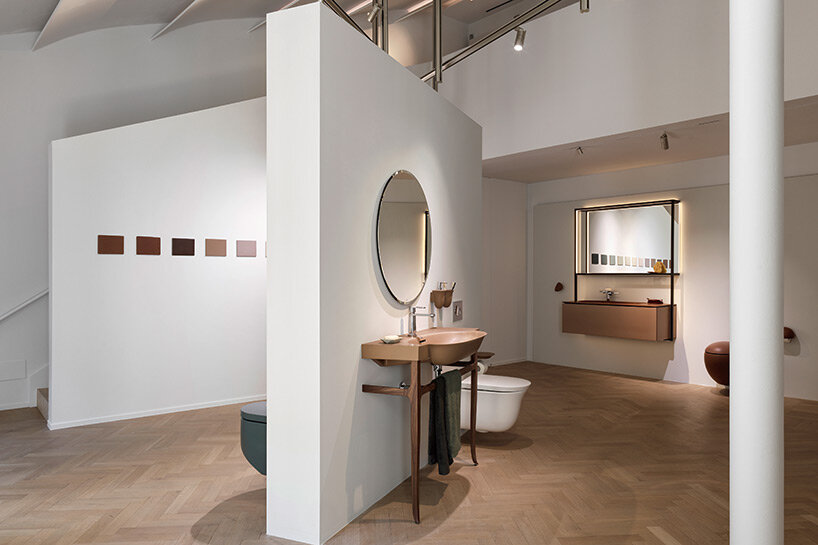
project info:
exhibition name: Color Archaeology
company: LAUFEN | @laufenbathrooms
designer: Studio Roberto Sironi
installation curation: Roberto Sironi with Beda Achermann
exhibition project: Matteo Fiorini – Studio Lys | @studiolys__
graphic project: Beda Achermann | @bedaachermann
colors: Burnt Orange; Red Ochre; Andean Purple; Reddish Patina; Ancient Mud; Dusty Pink; Babylonian Sand; Celadon Green; Jade Green; Egyptian Cerulean; Umber Green; Kashan Blue
location: LAUFEN space, Milan
dates: 16-21 April, 2024
